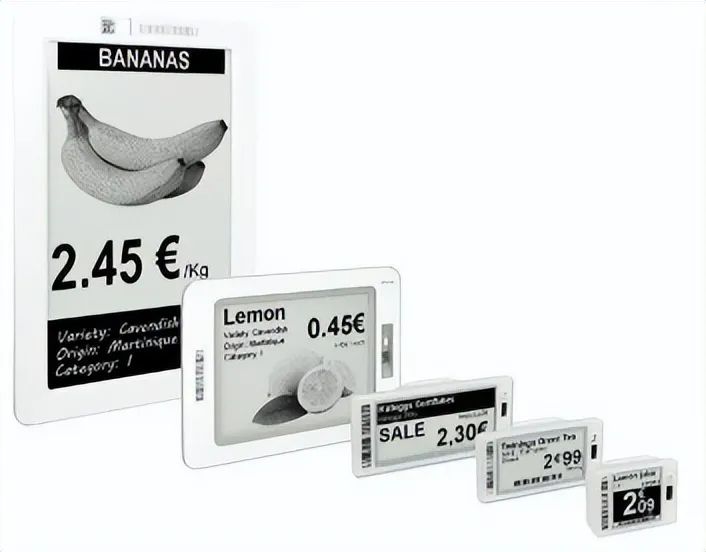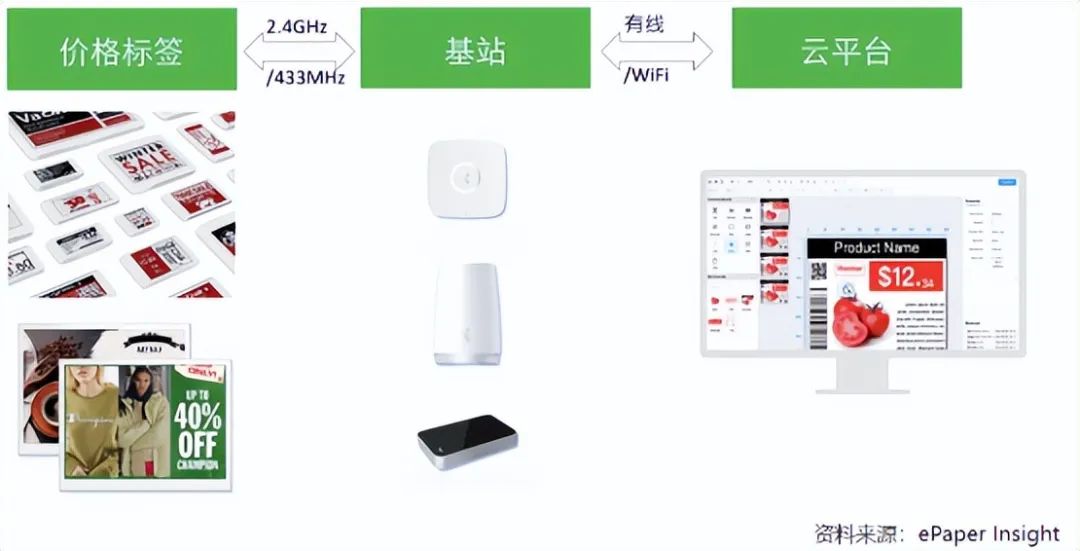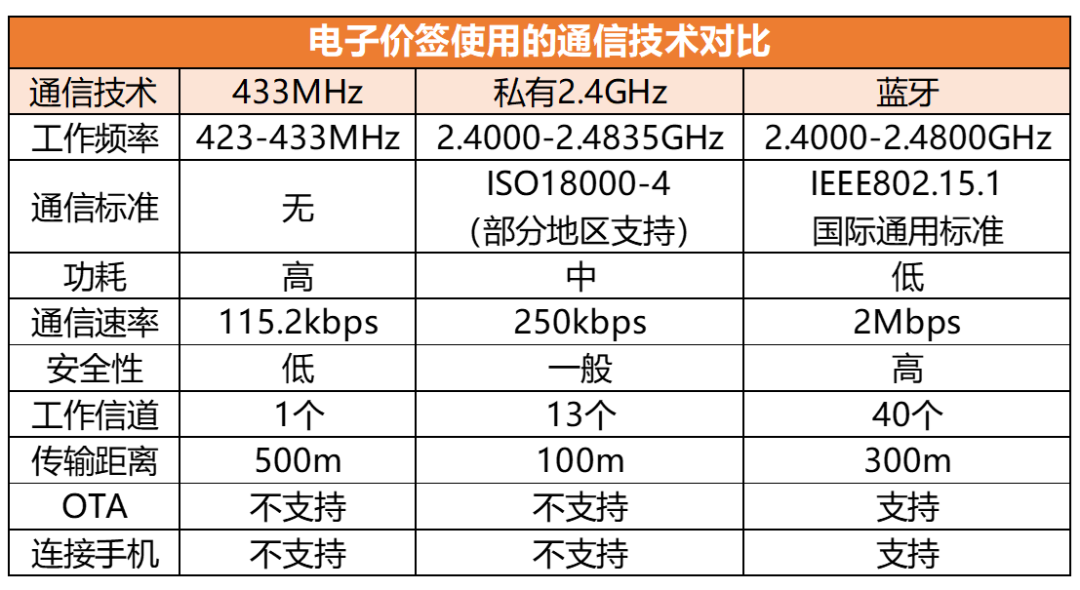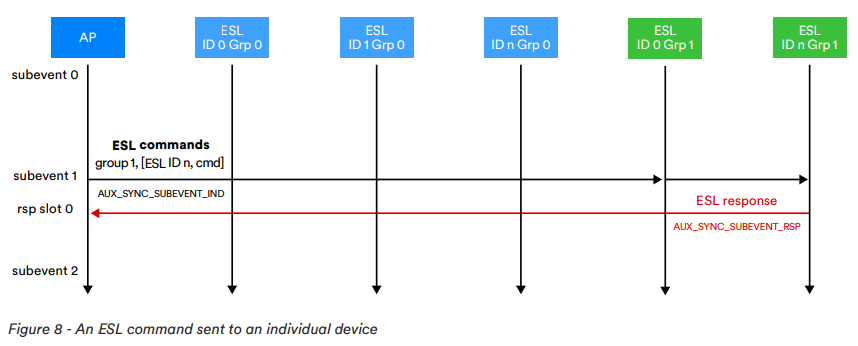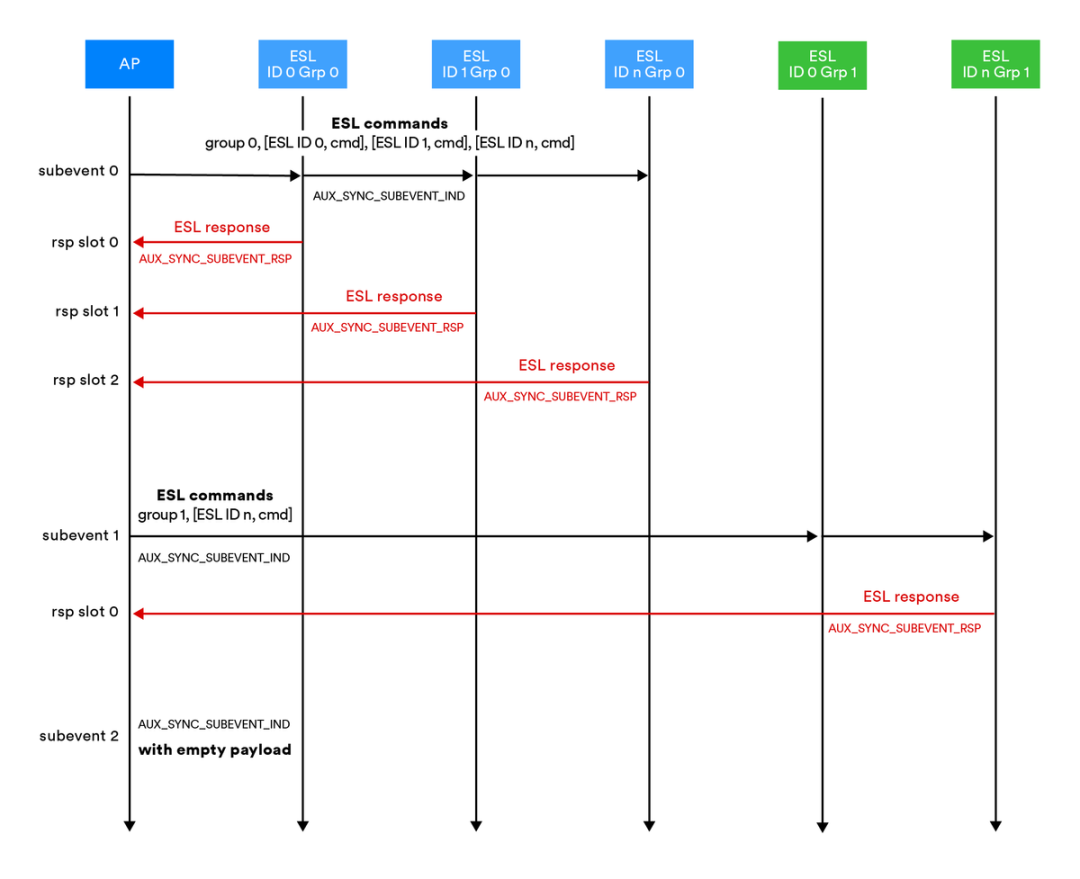Author:梧桐
According to Bluetooth SIG, Bluetooth version 5.4 has been released, bringing a new standard for electronic price tags. It is understood that the update of related technology, on the one hand, the price tag in a single network can be expanded to 32640, on the other hand, the gateway can realize two-way communication with the price tag.
The news also makes people curious about a few questions: What are the technical innovations in the new Bluetooth? What is the impact on the application of electronic price tags? Will it change the existing industrial pattern? Next, this paper will discuss the above issues, the future development trend of electronic price tags.
Again, Recognize the Electronic Price Tag
Electronic price tag, an LCD and electronic paper display device with the function of sending and receiving information, through wireless communication to achieve price tag information change. Because it can replace the traditional price tag, coupled with low power consumption (ink screen electronic price tag with 2 button batteries can achieve more than 5 years of endurance), it is favored by the majority of retail manufacturers. At present, it has been widely used in domestic and foreign well-known business super retail brands such as Wal-Mart, Yonghui, Hema Fresh, Mi home and so on.
And an electronic price tag is not just a tag, but a whole system behind it. Generally speaking, an electronic price tag system includes four parts: electronic price tag (ESL), wireless base station (ESLAP), electronic price tag SaaS system and handheld terminal (PDA).
The operating principle of the system is: synchronize commodity and price information on the SaaS cloud platform, and send information to the electronic price tag through the ESL base station. After receiving the information, the price tag can display basic commodity information such as name, price, origin and specification in real time. Similarly, the product information can also be changed offline by scanning the product code through a handheld terminal PDA.
Among them, the transmission of information depends on wireless communication technology. At present, there are three mainstream communication protocols used on electronic price tags: 433 MHz, private 2.4GHz, Bluetooth, and each of the three protocols has its own advantages and disadvantages.
So, Bluetooth is one of the more standard protocols, but in fact, in the market, Bluetooth and private 2.4GHz protocol usage is about the same. But now Bluetooth for the electronic price tag to establish a new standard, it is not difficult to see, is to capture the electronic price tag this application market more.
What’s new with the Bluetooth ESL standard?
Currently, the coverage radius of ESL base stations is between 30-40 meters, and the maximum number of tags that can be accommodated varies from 1000-5000. But according to the latest Bluetooth Core Specification Version 5.4, under the support of the new technology, a network can connect 32,640 ESL devices, in addition to the realization of ESL devices and gateway two-way communication.
Bluetooth 5.4 updates two features related to electronic price tags:
1. Periodic Advertising with Responses (PAwR, periodic advertising with responses)
PAwR will allow implementation of a star network with two-way communication, a feature that increases the ability of ESL devices to receive data and respond to the sender. In addition, ESL devices can be divided into multiple groups, and each ESL device has a specific address to maximize connections and enable one-to-one and one-to-many communication.
In the picture, AP is the PAwR broadcaster; ESL is an electronic price tag (belonging to different GRPS, with separate ids); subevent is a subevent; rsp slot is the response slot. In the figure, the black horizontal line is the AP sending commands and packets to the ESL, and the red horizontal line is the ESL responding and feeding back to the AP.
According to Bluetooth Core Specification Version 5.4, ESL uses a device addressing scheme (binary) consisting of 8-bit ESL ids and 7-bit group ids. And the ESL ID is unique in different groups. Therefore, the ESL device network can contain up to 128 groups, each of which can contain up to 255 unique ESL devices belonging to the members of the group. In simple terms, there may be a total of 32,640 ESL devices in a network, and each label can be controlled from a single access point.
2. Encrypted Advertising Data (EAD, Encrypted broadcast data)
EAD mainly provides broadcast data encryption functions. After the broadcast data is encrypted, it can be received by any device, but can only be decrypted and verified by the device that previously shared the communication key. The significant benefit of this feature is that the contents of broadcast packets change as the device address changes, reducing the likelihood of tracking.
Based on the above two features of the update, Bluetooth will be more advantageous in electronic sticker applications. Especially compared with 433MHz and private 2.4GHz, they have no international applicable communication standards, practicability, stability, security can not be better guaranteed, especially in terms of security, the possibility of deciphering will be greater.
With the arrival of the new standard, the electronic price tag industry may also usher in certain changes, especially the communication module manufacturers and solution providers in the middle reaches of the industrial chain. For manufacturers of Bluetooth solutions, whether to support OTA updates of sold products and whether to add Bluetooth 5.4 into the new product line is a question to be considered. And for non-Bluetooth scheme manufacturers, whether to change the core scheme to use Bluetooth is also a problem.
But then again, how is the electronic price tag market developing today, and what are the difficulties?
Electronic price tag market development status and difficulties
At present, through its upstream industry e-paper related shipments can be known, the shipment of electronic price tag has completed year-on-year growth.
According to Lotu’s Global ePaper Market Analysis Quarterly Report, 190 million e-paper modules were shipped globally in the first three quarters of 2022, up 20.5% from the same period last year. In terms of electronic paper products, the global shipment of electronic labels in the first three quarters reached 180 million pieces, with a year-on-year growth of 28.6%.
But e-tags are now running into a bottleneck in finding incremental value. Since electronic labels are characterized by long service life, it will take at least 5-10 years to replace them, so there will be no stock replacement in a long time, so we can only look for incremental market. The problem, however, is that many retailers are reluctant to switch to electronic price tags. “Some retailers have been hesitant to adopt ESL technology due to concerns about vendor lock-in, interoperability, scalability and the ability to scale it to other smart retail plans,” said Andrew Zignani, Research director at ABI Research.
Similarly, cost is also a big problem. Although the price of electronic price tag has been greatly adjusted to reduce a lot of laying costs, it is still only used by large supermarkets such as Walmart and Yonghui in the retail market. For small community supermarkets, convenience stores and bookstores, its cost is still relatively high. And it’s worth mentioning that electronic price tags are also just a requirement for non-large stores.
Moreover, the current application scenarios of electronic price tags are relatively simple. At present, 90% of electronic price tags are used in the retail sector, but less than 10% are used in office, medical and other scenarios. SES-imagotag, a giant in the digital price tag industry, believes that the digital price tag should not just be a passive price display tool, but should become a microweb of omnihanatic data that can help consumers make spending decisions and save employers and employees time and cost.
However, there is also good news beyond the difficulties. The penetration rate of electronic price tags in the domestic market is less than 10%, which means that there is still a lot of market to be tapped. At the same time, with the optimization of the epidemic control policy, the recovery of consumption is a big trend, and the retaliatory rebound of retail side is also coming, which is also a good opportunity for electronic price tags to seek market growth. Moreover, more players in the industry chain are actively laying out electronic price tags, Qualcomm and SES-imagotag are cooperating on standardized electronic price tags. In the future, with the application of high technology and the trend of standardization, electronic price tags will also have a new future.
Post time: Feb-21-2023

